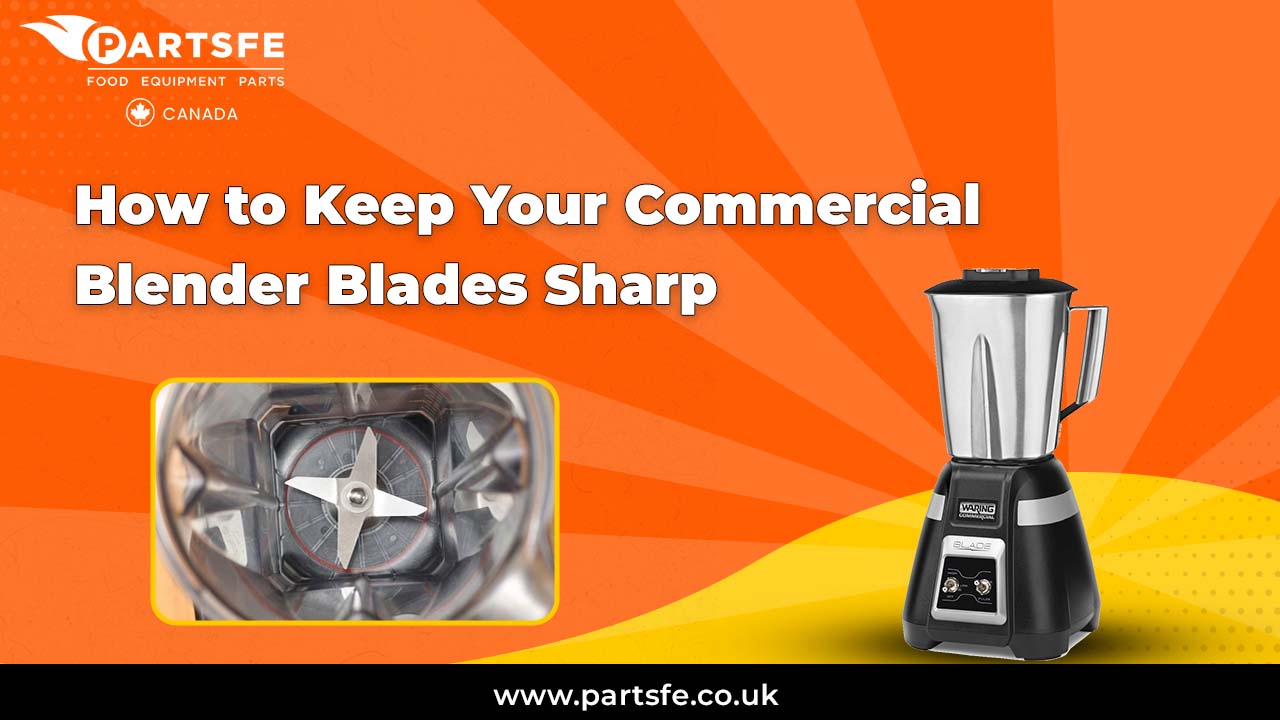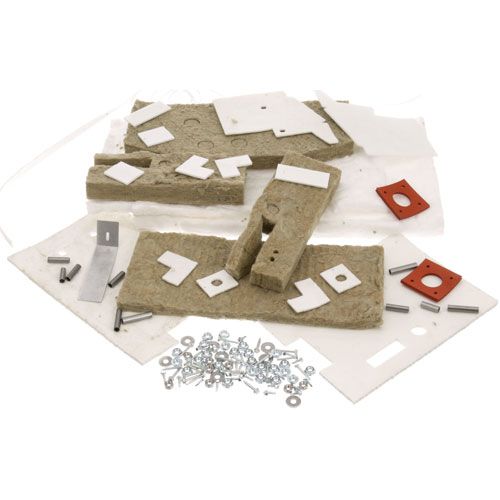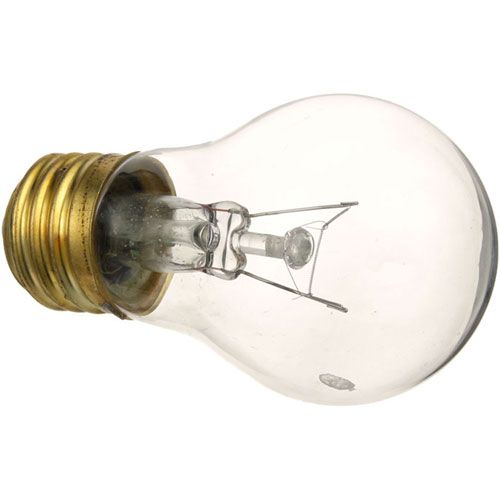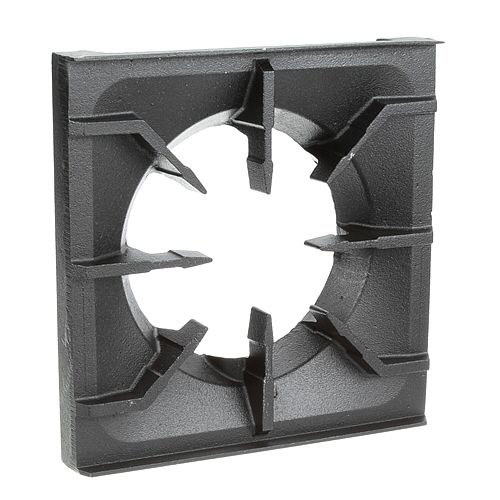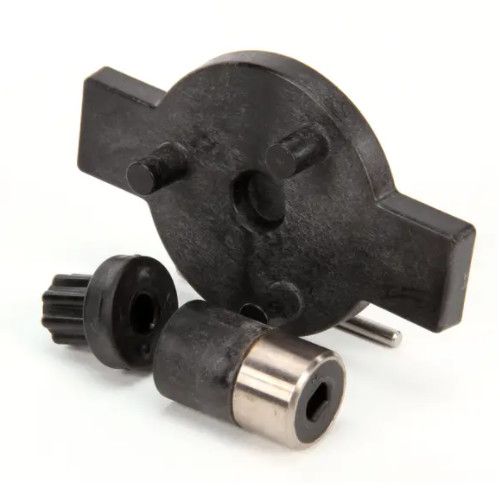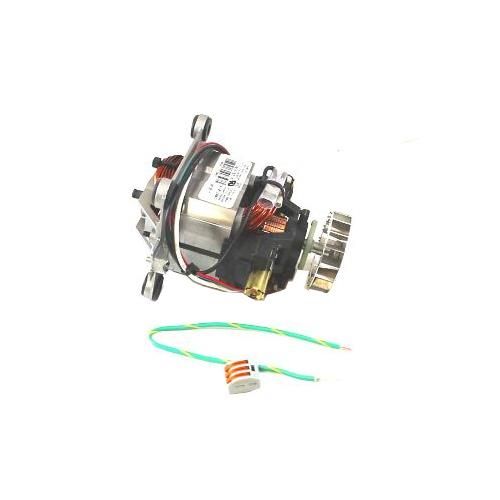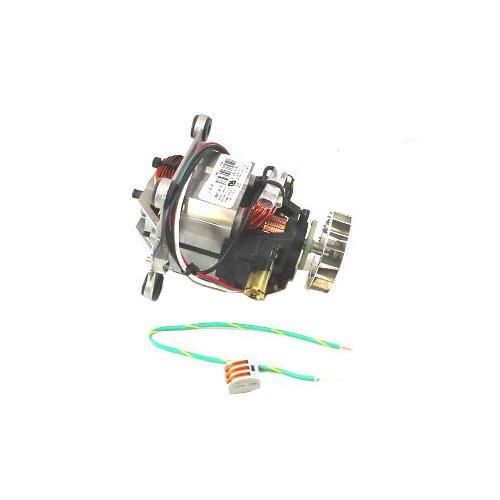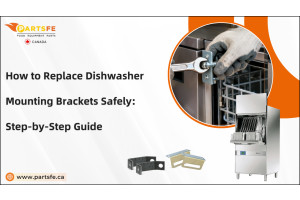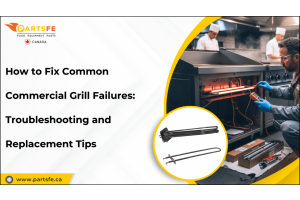How to Keep Your Commercial Blender Blades Sharp
The commercial kitchen requires a blender appliance to prepare smoothies, soups, sauces and break ice. The performance quality of a blender relies almost entirely on the condition of its blades. The performance of the blender suffers while the motor sustains damage when blades are not properly sharpened. The restaurant owner and chefs who operate commercial blenders and kitchen equipment need to understand blade maintenance because it extends both tool life and operational efficiency. The blender blades will survive longer when operators perform proper cleaning techniques and prevent overloading and regularly sharpen them. The maintenance process helps achieve better blending results and extends the lifespan of the blender so it becomes more valuable for busy kitchens.
|
Table of Contents |
The Importance of Sharp Commercial Blender Blades
The best performance in commercial kitchens depends on using sharp blades. The blades improve blending speed while producing better textures and minimize motor wear. Regular blade blender maintenance along with sharpening practices permit smooth equipment operation while simultaneously lengthening the equipment lifespan.
-
Improved Efficiency:The use of sharp blades enables quick and uniform blending which shortens the blending duration. The quick preparation of food becomes possible in commercial kitchens because of blade sharpness.
-
Better Texture: The smoothness of purees and smoothies and other blended items improves when blades maintain their sharpness. The use of dull blades results in both chunky and irregular textures in blended products.
-
Reduced Motor Strain: The motor requires less effort to blend ingredients because a sharp blade blender reduces the strain on the motor. The motor must work harder when using dull blades which shortens its lifespan and results in expensive maintenance costs.
At PartsFe Canada, we specialize in providing high-quality commercial mixer blender parts to keep your equipment running smoothly. Our extensive inventory includes essential components such as blender blades, jars, lids, and drive sockets, all designed to ensure optimal performance and durability.
Regular Cleaning to Prevent Build-up on Commercial Blender Blades
Commercial blender blades require regular cleaning to avoid accumulation of substances. Food debris along with grease and other accumulations rapidly cover the Blender blades. Regular cleaning of your blades will help avoid build-up thus extending their cutting edge efficiency. Here’s how to clean & prevent build-up on commercial blades blender:
-
Disassemble: The cleaning process starts with turning off the blender and unplugging it before disassembly. Take out the blade assembly before cleaning it as a distinct unit
-
Wash Right Away: The blades should receive immediate warm water washing following each operation to stop food residue from forming dry deposits.
-
Deep Clean: A soft brush or sponge with mild soap and warm water should be used to clean blades followed by soaking them in water mixed with vinegar to remove tough residue before gentle scrubbing.
-
Dry Thoroughly: After cleaning the blades you should dry them right away using a soft cloth to stop rust or corrosion from forming.
-
Check for Build-up: Regular blade inspections should focus on checking for food and mineral build-up especially near the blade base because this build-up reduces blade sharpness.
Use gentle cleaning materials which will not scratch or dull the blades of your blender. Executive the self-cleaning mode of your blender regularly to reduce needing manual cleaning.
Avoid Overloading to Protect Commercial Blender Blades
The main mistake people make when using commercial blenders is filling them beyond their capacity. The blender blades together with motors experience extreme mechanical stress and physical strain. The prolonged exposure leads to premature damage of the equipment. The blender's lifespan can be extended by avoiding excessive filling of ingredients.
Here’s why overloading is bad:
-
Blade Blunting: When a blender contains too many ingredients it forces the blades to operate at higher speeds than needed which speeds up their dulling process. The performance of dull blades suffers while the blended items develop an inconsistent texture. A sharp blade blade produces uniform blending without texture variations while reducing motor wear.
-
Motor Strain: The motor of an overloaded blender operates beyond its capacity because of excessive strain which leads to overheating that could reduce the motor's lifespan or cause it to stop working. The blender's life span decreases when users subject it to repeated heavy loads because this leads to expensive maintenance costs or complete replacement.
-
Uneven Blending: The blades in an overloaded blender will fail to reach every ingredient which produces uneven blending results. The blending process produces uneven textures while omitting some ingredients from the mixture. The key to obtaining uniformity lies in avoiding excess filling of the blender jar.
Here’s how to avoid overloading:
-
Follow Manufacturer's Guidelines: The recommended capacity of your blender should be checked to prevent overloading which will ensure optimal performance. Blenders work less efficiently along with increased motor strain when capacity exceeds the recommended limit. The guidelines protect both the blender's operational lifespan and its operational capabilities.
-
Blend in Batches: Large amounts of material should be divided into smaller portions to achieve uniform mixing. Putting too much material into the blender at once will produce unbalanced mixing while straining the motor beyond its limits. The process of blending in batches leads to better outcomes while simultaneously prolonging the lifespan of your equipment.
-
Use the Right Speed: Thick or dense mixtures should be blended at low speeds to protect the motor from excessive strain. The blending speed should be increased gradually after the mixture starts breaking down to avoid overloading and achieve smooth operation. The motor operates efficiently and remains protected when users adjust their blending speed correctly.
How to Sharpen Commercial Blender Blades Effectively
Commercial blender blades receive manufacturing to achieve extended durability yet they become dull after repeated use. Proper knowledge about blade sharpening time and methods delivers optimal performance for commercial blenders. Some methods exist for sharpening commercial blender blades yet these methods might not work on all models. The following are common approaches:
Sharpening with a Blade Sharpener
A sharpening stone or honing rod will work to sharpen your blades when you maintain a steady angle while you gently move the blade across the stone. Apply light pressure while repeating the process on both sides of the blade but check its sharpness often to prevent excessive sharpening. The blade edge remains intact through this process which results in peak operational performance.
Manual Sharpening
The process of blade sharpening requires a sharpening stone or honing rod which you should use while maintaining a steady angle during sweeping motions. The blade should be sharpened with light pressure and the sharpness needs regular checks to prevent blade damage or over-sharpening. Perform the process again on both sides to achieve a balanced edge.
Do It Yourself Sharpener
A file serves as an alternative blade sharpener when you lack access to stones or rods although its precision is limited and produces less sharpness. The best practice for peak performance involves utilizing specialized tools and/or acquiring professional services.
When to Replace Commercial Blender Blades for Best Performance
Blades eventually reach their end of service life despite regular maintenance and sharpening. Knowing how to replace blades becomes essential for achieving optimal performance in this step.
Warning signs to replace blades:
-
Deteriorated Blades: The blades need immediate replacement when they show signs of cracking, chipping or bending because they become unsafe for use.
-
Poor Blending: The blades need replacement if they fail to blend properly even after blade sharpening because their cutting ability has been reduced.
-
Often Strained Motor: The motor operates at excessive strain or overheats frequently when worn-out blades force the system to work harder than necessary.
-
Rust or Corrosion: The presence of significant rust or corrosion on the blades' cutting edge creates worrying performance and safety problems during food processing.
How to replace blades:
-
Order Manufacturer Parts: The purchase of replacement blades must originate from the manufacturer because they provide parts that match your specific blender model.
-
DIY Replacement: The replacement of blades can be done by yourself if your blender model allows it. The blade assembly of most commercial blenders can be easily removed and replaced by users.
-
Professional Help: Contact a professional technician to perform the replacement if you doubt your ability to handle the task.
Maintaining Sharp Commercial Blender Blades for Longevity
Using sharp blades made for commercial blenders will provide efficient blending results along with consistent mixing performance and extended blender life. The maintenance process involves regular blade cleaning and avoiding blender overloading while blade sharpening should occur when they become dull and blade replacement should happen when needed.
Scheduled maintenance services serve multipurpose by maximizing kitchen output along with minimizing the need for future expensive repairs. The guidelines and tips given in this article will help your commercial blender serve your kitchen efficiently for an extended period.
FAQs
Why do blender blades become dull?
Blender blades can become dull over time due to frequent use, especially when blending tough or hard ingredients like ice or fibrous vegetables. The repeated friction and pressure can wear down the blade's edge, reducing its effectiveness.
Do eggshells sharpen blender blades?
No, eggshells will not sharpen the blender blades properly. Some believe it might, but they normally cannot sharpen in an accurate way, so a dedicated tool or service is a much better way.
How do I clean blender blades?
To clean blender blades, fill the blender halfway with warm water and a few drops of dish soap, then run it for a few seconds; rinse thoroughly afterward.
How do I remove blender blades?
To remove blender blades, first unplug the blender, then unscrew the blade assembly from the bottom of the jar; handle the blades carefully to avoid injury.

